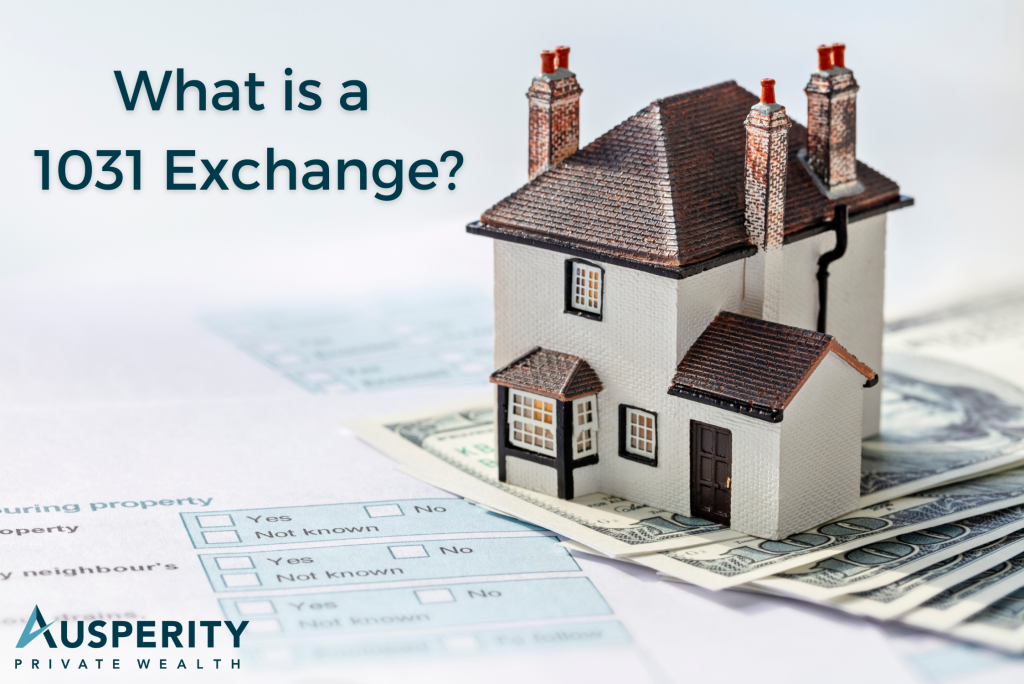A 1031 exchange – frequently referred to as a “like-kind” exchange – is a tax-management strategy that allows real estate investors to defer capital gains taxes on the sale of a property by reinvesting the proceeds into a new property of the same type. These exchanges can be powerful tools, but there are some rules and other considerations investors should be aware of before implementing a 1031. This guide outlines what a 1031 exchange is, what the benefits may be, and what requirements must be met in order to unlock those benefits.
Potential Benefits of a 1031 Exchange
The primary benefit of using a 1031 exchange is the potential for tax savings. Typically, when an investment asset is sold and a gain is realized, you incur a capital gains tax for the year in which the sale was made. If you hold the asset for more than a year before selling, capital gains taxes can be as high as 20% depending on your income. If you hold it for less than a year, the IRS treats it as a “short-term” capital gain and taxes it as ordinary income, which may be higher than 20%. By allowing you to defer this tax obligation, a 1031 exchange may help you lower your total tax burden in the near term and free up capital for reinvestment. Here are some of the ways deferring capital gains taxes with a 1031 exchange may benefit you:
Tax-Deferred Growth. By allowing you to reinvest the proceeds from one investment property into another one without paying taxes on the gain, 1031 exchanges afford you the potential for tax-deferred growth. Deferring your taxes means you can reinvest a larger portion of your proceeds and possibly grow your portfolio faster. The tax burden from this sale is deferred until the sale of the new investment property, at which point you may be able to use another 1031 exchange.
Diversification. A 1031 exchange can be a tax-efficient method of diversifying your real estate holdings. By allowing you to exchange one investment property for another, you can move from one geographic area to another or swap a property out for one with better growth or income-generation prospects. Diversification can provide multiple benefits, such as managing risk, increasing cash flow, and bolstering long term returns.
Estate Planning. When an investor dies, the cost basis of their property is “stepped-up” to its market value at their time of death. By using a 1031 exchange, you may be able to pass on a larger real estate portfolio to your heirs on a stepped-up basis, possibly reducing the tax liability they’ll ultimately be burdened with. Your heirs may also be able to take advantage of further tax deferral if they choose to sell the property in the future.
Types of 1031 Exchanges
A 1031 exchange can work in a handful of different ways depending on the circumstances of the property sale and property acquisition. The most common types include:
Simultaneous Exchange. The most straightforward type of 1031 exchange, a simultaneous exchange refers to when the sale of the old property and the purchase of the new property occur on the same day.
Delayed Exchange. More common than simultaneous exchanges, a delayed exchange refers to when the sale of the relinquished property occurs before the purchase of the replacement property.
Reverse Exchange. In a reverse exchange, the investor acquires the replacement property before selling the relinquished property. This type of exchange is more complex and may require the use of an exchange accommodation titleholder (EAT) who holds the property until the sale of the relinquished property is complete.
Improvement Exchange. Also known as a construction exchange, an improvement exchange allows an investor to use some of the exchange proceeds to make improvements to the replacement property.
Requirements for a 1031 Exchange
There are a number of requirements that investors must meet in order to qualify for a 1031 exchange, including:
Like-Kind Property. The property being sold and the property being purchased must be of “like-kind” according to the IRS. For example, a rental property can only be exchanged for another rental property, and a commercial property can only be exchanged for another commercial property. If you were to exchange a rental property for a commercial property, you wouldn’t be afforded the benefits of a 1031 exchange.
Investment Property. Both of the properties involved in the exchange must be investment properties, not personal residences or vacation homes. This means they must be held for business or investment purposes, such as earning rental income or appreciating over time.
Qualified Intermediary. Investors must use a qualified intermediary (QI) to facilitate the exchange. The QI holds the funds from the sale of the relinquished property and uses them to purchase the replacement property.
Time Limits. Starting from the date of sale, you have 45 days to identify replacement properties and 180 days to complete the purchase of one or more of those properties.
Interested in a 1031 Exchange?
A 1031 exchange may be a useful tool for real estate investors looking to defer the capital gains taxes associated with the sale of an investment property. While there are requirements that must be met, the benefits of this strategy can make it well worth the effort. As with any investment decision, think about consulting with a qualified professional who can help you determine whether a 1031 exchange makes sense within the context of your financial plan.
Best,

Robert (Rory) J. O’Hara III, CFP®, CRPC®
Founder | Senior Managing Partner
This material is intended for informational/educational purposes only and should not be construed as tax, legal or investment advice, a solicitation, or a recommendation to buy or sell any security or investment product. Investments are subject to risk, including the loss of principal. Some investments are not suitable for all investors, and there is no guarantee that any investing goal will be met. Certain sections of this material may contain forward-looking statements. Forward-looking statements are not guarantees of future performance and involve certain risks and uncertainties, which are difficult to predict. Past performance is no guarantee of future results. Third-party links are provided to you as a courtesy. We make no representation as to the completeness or accuracy of information provided at these websites. Information on such sites, including third-party links contained within, should not be construed as an endorsement or adoption of any kind. Please consult with your financial professional and/or a legal or tax professional regarding your specific situation and before making any investing decisions. There are material risks associated with investing in DST properties and real estate securities including liquidity, tenant vacancies, general market conditions and competition, lack of operating history, interest rate risks, the risk of new supply coming to market and softening rental rates, general risks of owning/operating commercial and multifamily properties, short term leases associated with multi-family properties, financing risks, potential adverse tax consequences, general economic risks, development risks, long hold periods, and potential loss of the entire investment principal. Past performance is not a guarantee of future results. Potential cash flow, returns and appreciation are not guaranteed. IRC Section 1031 is a complex tax concept; consult your legal or tax professional regarding the specifics of your particular situation. This is not a solicitation or an offer to sell any securities. DST 1031 properties are only available to accredited investors (typically have a $1 million net worth excluding primary residence or $200,000 income individually/$300,000 jointly of the last three years) and accredited entities only. If you are unsure if you are an accredited investor and/or an accredited entity please verify with your CPA and Attorney. Diversification does not guarantee a profit or protect against a loss in a declining market. It is a method used to help manage investment risk.
